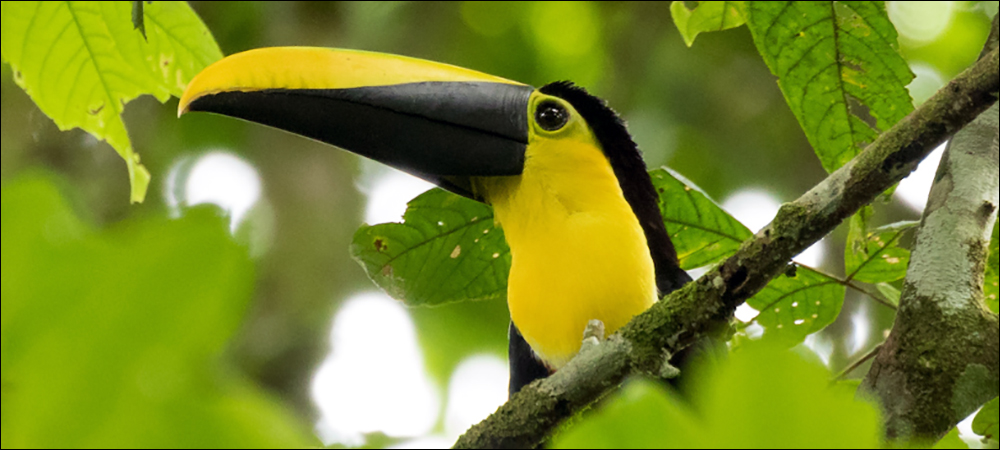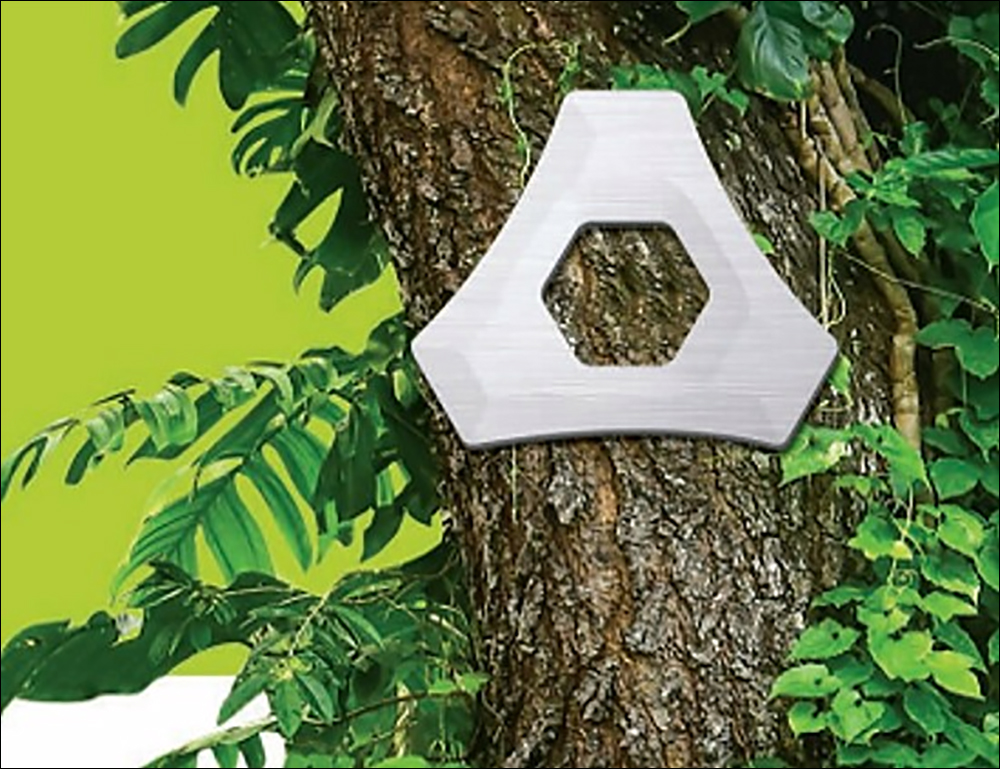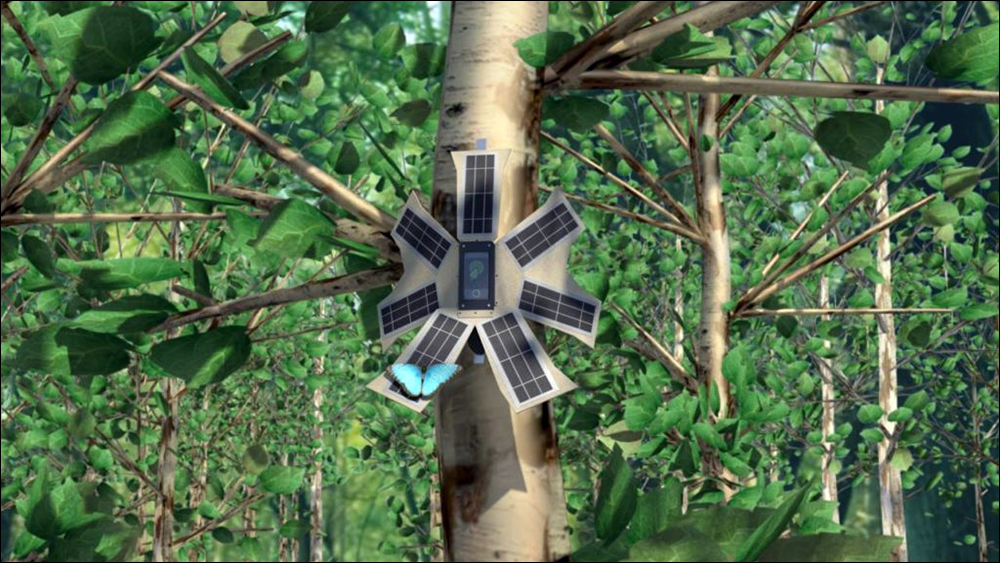Apr 07, 2023RFID Journal LIVE! 2023 will feature end-user companies discussing RFID's use in various industries, as well as exhibitors offering tagging solutions for multiple applications. To learn more, visit the event's website.
Nonprofit technology company Rainforest Collection, which provides an Internet of Things (IoT) solution to detect threats to forests in remote locations, is bringing its technology to a more local and domestic setting: people's backyards (see Detecting the Sound of Illegal Logging via IoT). The company's Guardian wireless devices measure sound to obtain data regarding threats related to illegal logging around the world. The latest version, known as Squibbon, is intended for more domestic purposes in people's homes, and it collects data about what's taking place right around them.

A Kickstarter campaign is underway to fund this project, with the first 100 devices slated to be shipped by this summer. The Squibbon will be designed to be mounted on a tree, an awning or another structure to capture and analyze audio, then stream the results to a server, making it accessible to users via an app. The device will incorporate Wi-Fi technology, and it could be fitted for LoRaWAN satellite, cellular connectivity or an Ethernet cable, according to Topher White, Rainforest Connection's founder and executive chair.
White says he has already installed the technology in his own yard, and that it reports to him the wide variety of birds, mammals and amphibians making their way through his yard and around his house. The wildlife version depends on low-Earth orbit satellite capabilities from Swarm to access data from devices in places lacking cell phone networks.
Previously, the technology streamed audio over cell-phone networks. The company has recently been interested in how content from the devices could make more impressions on the average person. "When it comes to people caring about nature," White explains, "they need more access to information about the world [immediately] around them."
Detecting Sounds in the Forest
For nearly a decade, Rainforest Connection's devices have been detecting the sounds of chainsaws or heavy machinery in places where such noises should not occur, such as in Brazilian rainforests. The devices have forwarded data to a server so authorities could be alerted. Once installed, the system uploads a continuous recording of the surrounding environment's soundscape. A built-in processor analyzes the audio it receives before transmitting filtered data to the server. If the solution detects the sound of a chainsaw or truck, an alert can be forwarded to authorized parties.
White reports that the system is working precisely as intended at the sites where it has been deployed. The other side of the solution, he says, is biodiversity detection, which has proven more technologically challenging. The company has employed scientists to create an algorithm around the sounds coming from a particular forest, to determine how much biodiversity exists, including birds, reptiles and mammals, and thus ensure a healthy amount of diversity is present. These efforts have led to the listening device being reengineered with greater functionality related to animal identification, built into a smaller frame.

"We took five times as much tech and managed to cram it into a single enclosure," White says, for its new product, known as the Delta. The Squibbon is the backyard version of the Delta, he explains,. And the company provides a streaming app to make the collected audio available worldwide. Based on data already culled from forests, he says, "We have some very diehard users who use it every day." Other people, meanwhile, "will listen for a while, they'll be like 'That's kind of cool,' and then they'll go about their lives."
The company's leadership felt challenged to bring wildlife into people's lives in a way that might be more personal. "If we want to make nature a bigger part of people's lives," White says, "we shouldn't force it on them for ideological purposes [such as saving rainforests]. We should make a case for why it actually does matter to them." This, he adds, means bringing the content closer to home, "as kind of a smart home for the backyard."
How It Works in Your Backyard

Topher White
The Squibbon can connect to solar panels, and it comes with an expansion slot for cameras, lamps or extra batteries. The device is shaped with three sides, with microphones incorporated into each side to gather sound from all directions, and to thereby geolocate the position from which the sounds are coming. Once users mount the device, they can download the related app, select the transmission method to forward data to a server, and adjust settings based on the information they seek.
The first phase of the solution will be to identify animals passing through the area around the device. The system can detect and identify different species of birds and other animals, based on their movements and vocalizations. Users can view that information in real time or access a history of each animal detection. The devices are set to filter out sounds related to people, and to only listen for animal sounds. So if a jet were to pass overhead, or if a garbage truck drove through the neighborhood, those sounds would be excluded. In that way, White says, the technology flips the original technology on its head, since the rainforest-based device listens specifically for human sounds.
Because the filter eliminates human sounds, it ensures the device can continue listening for animal life even when machinery is making noise in the area. In that way, White says, it doesn't need to be turned off during times of human distractions. In his own backyard, the technology is providing an example of the results. During the short span of time as the Sun rises, he says, the device has detected many crows, chickadees, a raven, warblers, bushtits and a cedar waxwing. Several amphibians have been detected scurrying along the ground, and the system is also set to detect the sounds of rats, for which White has a strong affinity.
Telling Interactive Animal Stories
During the next phase, the Squibbon will not only detect and identify animals, but also provide storytelling around those sounds. This will create the same data points related to which animals are detected, when they typically come and go, the sounds they make and what that might mean. "So it's possible to build generative AI [artificial intelligence] stories off of [sounds]," White states, "and to then create experiences around it." However, he adds, the system is intended for entertainment and education purposes rather than for scientific analysis. "The EPA is not going to share this [content]."
Instead, the device takes baseline scientific data, then builds AI layers on top of that, enabling the app to help people engage with information about their neighborhood wildlife. A third phase of the solution may allow residents to better understand the environment, and to interact with nature based on sounds. For instance, White says, animals might become noisier during specific times, such as when they recognize other animals or even humans. He envisions families using animal activity, detected by the app, to tell a story of their outside world for children.

The third level could be more complex, White says, as it would provide analytics that could allow individuals to interact with the creatures with which they share their yard. He posits an example of someone dropping their keys, then using activity on the part of crows to find them (assuming that the birds would respond to the presence of unfamiliar, shiny objects). Crow behavior might identify other activities of interest to human residents as well, such as when people enter or leave the area.
The device is not intended for security, the company notes, as there are other technologies built for that purpose. "We want to make a case for why having wildlife in your environment is not just fun, but also additive," White says. During the second or third phase of the solution, users could set the system to sound an alert based on their specific interests, such as indicating the next time a pileated woodpecker is detected, as well as where it is located, such as in the pine tree, 20 feet above the ground.
In the long term, versions of this device could be used in national or public parks to measure biodiversity, or on farms to analyze the health of bird-migration corridors, or to detect the presence of feral hogs or other pests. The company has taken a strategic approach in focusing first on more consumer-based solutions, however. Rainforest Connection is proud of the Guardian, White says, and the benefits it provides around the world, "But it's still not something that can be held up to a standard of somebody taking it home." By offering the Squibbon, he adds, "We're pushing conservation tech into the standard mainstream."
Key Takeaways:
- Internet of Things technology designed to protect forests is now configured for backyard use, to capture audio data that identifies animals and their locations.
- The system, consisting of a wireless sensor and an app, is aimed at providing better engagement between individuals and the nature around them.

